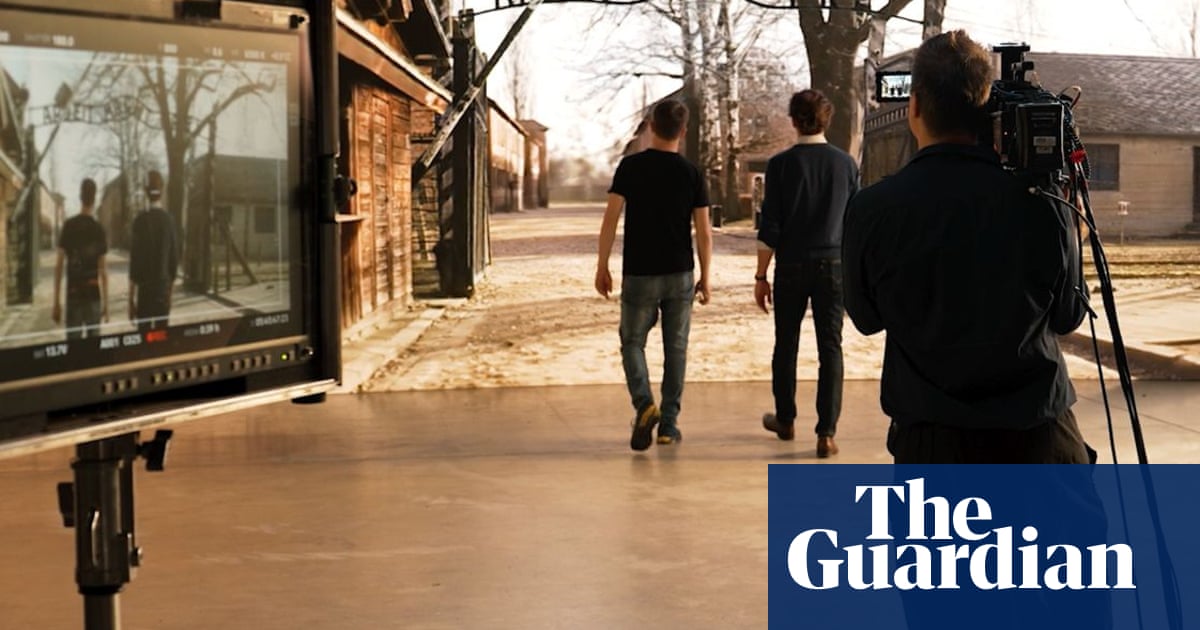The Auschwitz Memorial has launched a “historically accurate” digital replica of the former concentration camp for filmmakers to set their pictures in, breaking a long-held taboo around shooting features at the grounds where an estimated 1.1 million people were murdered by the Nazi regime.
At the Cannes film festival on Thursday, the organisers of thePicture from Auschwitzproject said they have harnessed “cutting-edge 3D scanning technologies” to build a digital model of the concentration camp that matches the site in its current state “down to every single brick”.
A second phase of the €1.5m project will involve 3D scanning the adjacent Birkenau site, which is roughly 30 times larger than Auschwitz, as well as building historically accurate digital replicas of the crematoriums and gas chambers that were destroyed by the Nazis in late 1944.
“We are responding to a growing need,” said Wojciech Soczewica, director of the Auschwitz-Birkenau Memorial. “More and more people are coming to visit Auschwitz because they are interested in history, and it’s our responsibility to provide the film industry with resources that are credible.”
Soczewica said the licensing model for Picture from Auschwitz had not yet been finalised, but that any fees would go directly to the memorial and thus support its mission to commemorate the victims.
Currently, the memorial only allows documentaries to be made on its site, a ban that has been in place since the late 1980s. In 1963, the makers of acclaimed Polish film Passenger were still given permission to film at Auschwitz.
In the early 90s Steven Spielberg was denied permission to film Schindler’s List inside the concentration camp, setting one scene outside the infamous Auschwitz gatehouse and building replicas of the barracks just outside the camp.
Italian director Roberto Benigni’s Life Is Beautiful, which is partially set in a concentration camp, was filmed in an abandoned factory near Papigno, Umbria, while Hungarian director László Nemes’s Oscar-winning Auschwitz drama Son of Saul was shot on the outskirts of Budapest.
The Auschwitz-Birkenau Memorial said the feature-film ban was due to the need to preserve the site and prevent closures, rather than moral concerns. But some film-makers and artists have argued that setting films inside Auschwitz is outright unethical.
Austrian director Michael Haneke condemned Schindler’s List as “unspeakable” for drawing suspense out of the question of whether gas or water would flow out of the shower heads at the camp.
Oscar-winning 2023 film The Zone of Interest was filmed on grounds next to the camp, but British film-maker Jonathan Glazer made an artistic and ethical point about never allowing his cameras to swoop over its walls.
Asked about what kind of films could use the Picture from Auschwitz resource, the memorial’s spokesperson Pawel Sawicki said: “When assessing proposals for film projects, we put historical accuracy above everything else: whether this is what happened at Auschwitz, or what could have happened at Auschwitz, given the knowledge coming from the testimonies, historical documents we have, and years of historical research.”
As to whether this could in principle allow horror films, action movies or video games to be set inside Auschwitz as long as they were historically accurate, Sawicki said the rules around genre had not been finalised.
“The lines have not been drawn yet, as this is something very new for us, but there will certainly be boundaries. The camp should not be used as a stage in any way. If the proposal is to make a film that distorts history, dishonours the memory of victims, or serves purely as entertainment, that’s a red flag for us.”
One of the people who has advised the project is Ryszard Horowitz, 86, a photographer who was interned at Auschwitz as a five-year-old in 1944, and survived after his family were taken under the wing of Oskar Schindler. “I’m for keeping this story alive, and I like the idea of authenticity,” he said.
Polish film-maker Agnieszka Holland, who is acting as Picture from Auschwitz’s director, said she believes opening up the site for film-makers of the future was necessary to allow a new generation to confront the darkest moment in European history.
“For a long time, the horror of the second world war and theHolocaustwas a warning lesson that brought about important changes, such as the construction of a European identity,” Holland said.
“But the vaccinating effect of the Holocaust has evaporated, and now we are in a similarly dangerous situation to where we were 90 years ago.”
